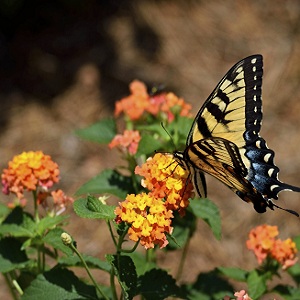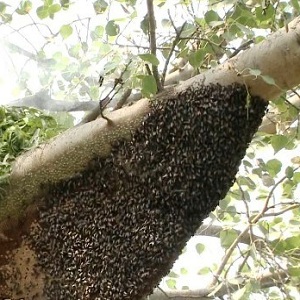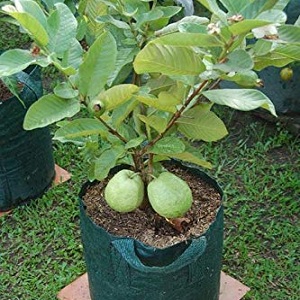Butterfly Attracting Trees & Bushes
- Ivory Wood: Wrightia tinctoria
- Star Cluster: Pentas lanceolata
- Indian Caper: Capparis sepiaria
- Aristolochia: Aristolochia bracteolata
- Cherry Pie: Heliotropium arborescens
- Pink snakeweed: Starchytarphata mutabilis
Nectar Yielding Trees and Bushes
Nectar yielding trees
- Red Silk Cotton: Bombax ceiba
- Flame of the forest: Butea monosperma
- Indian Coral Tree: Erythrina indica/verigata
- Erythrina: Erythrina suberosa
- Eryrhina: Erythrina stricta
- Bottle Brush: Callistemon lanceolatus
- Gliricidia: Gliricidia_sepium
- Indian Cork Tree: Millingtonia hortensis
- Badminton ball tree: Parkia biglandulosa
- Jacaranda: Jacaranda mimosifolia
- Tulip Tree: Spathodea campanulata
Nectar yielding bushes
- Erythrina: Erythrina crista-galli
- Tubular Hibiscus: Hibiscus rosa-sinensis
- East Indian Screw Tree: Helecteres isora
- Powder-puff: Calliandra haematocephala
- Orange Trumpet Flower: Tecoma smithii
- White Silk Cotton: Cochlospermum gossypium
- Scarlet-Sterculia: Firmiana colorata
- Scarlet bush: Hamelia patens
- Cup and Saucer Bush: Holmskioldea sanguinea
- Fire-Flame Bush: Woodfordia fruticosa
- Pink snakeweed: Stachytarpheta mutabilis
- Queen's Wreath: Petrea volubilis
Fruit Yielding Trees & Bushes
- Neem: Azadirachta indica
- Peepul: Ficus religiosa
- Ficus: Ficus recemosa
- Singapore Cherry / Jamaican Cherry: Muntingia calabura
- Paper mulberry: Broussonetia papyrifera
- Banyan: Ficus benghalensis
- Mulberry: Morus alba
- Jamun: Syzygium cumini
- Bastard's Sandle: Erythroxylum monogynum
- Indian Snow Berry: Securinega leucopyrus
Restoring Coastal Ecosystem in Tsunami Affected Villages
In the aftermath of the 2004 tsunami, ARULAGAM has been working in the coastal areas of Idinthakarai and nearby coastal villages of Thirunelveli District in Tamilnadu. lrumannal and Idinthakarai were major tsunami affected villages In Tirunelveli District. It was felt that a positive attitude towards eco-restoration had to be built up in the community. Arulagam started its work in ldinthakarai and developed a project to green the coast and inculcate environmental values in children living in the coastal areas. The main objectives were to form nature clubs and to plant trees in the coastal areas of Idinthakarai and nearby villages.
Bio Shield Development
Shelter Belt with Single Species : To develop the bio shield and improve the coastal vegetation along the coastal villages of Thirunelveli district ARULAGAM first conducted a detailed assessment regarding the most suitable species for the existing ground situation. Pongamia glabra was identified as suitable beachfront ground cover for soil stabilization in the specific landscape, and for erosion resistance as well as for mellowing strong winds. Pongamia glabra has been planted with community participation in 60 acres of coastal lands In the villages of Idintha Karai, Vijoyapathy, Thomayarpuram, Thillaivanam Thoppu, Arivikarai and Avudayalpuram, Though the plantation area is in rain shadow, the organization’s hard work in monitoring and maintaining the plantations with participation from local people has resulted in the survival of 70% of the planted trees.
Greenbelt with Multi Species : Many studies show that a greenbelt ideally represents a multipurpose investment in terms of stabilizing a fragile and unconsolidated beach front in the coastal belt, functioning as a wind barrier where necessary. providing shade and protection, enhancing the landscape for recreation and providing opportunities for economic returns to traditional coastal communities. In the post tsunami scenario there was a need to establish a coastal belt of vegetational cover in the coastal villages of Idinthakarai, Arivikarai, Thomayarpuram and Thillaivanam thoppu in Thirunelveli district and these villages were selected for the plantation of multi species.
After a full assessment of the physical and ecological conditions of the selected sites and after discussions with local community members, Arulagam has planted 50 different species in the project situ. Community members are involved in nursery raising and transplantation of these 50 species in the coastal areas of Idinthakaral, Arivikarai, Thomayarpuram and Thillaivanam thoppu. Due to the successful efforts taken by the community and the staff of Arulagam 60% of planted trees have survived.
Names Of Some Of The Species Planted
- Callophyllam Inophyllam
- Phandanus Phandanus
- Thespesia populnea
- Blumaria
- Rajasthan Teak
- Lanea coromandalica
- Madhuca longifolia
- Mangifera Indica
- Acacia auriculiformis
- Acacia catechu
- Clerodendran Tnermis
- Cassia fistula
- Azadiracta Indica
- Albizia lebbeck
- Peltophorum ferugmea
- Ficus bhengalensis
- Ficus glomerata
- Terminalia catappa
- Cassia alata
- Dodonea viscose
- Cassia auriculiformi
- Anacordium
- Delonex eleta (Vadanaroyan)
- Carissa Carandis
- Lawsonia
- Manilkara hexandra
Community Plantation
To promote vegetational cover in common places and in the households of community members Arulagam initiated community plantations. 3400 saplings were distributed to 240 beneficiaries and those tree saplings were planted in the tsunami-housing unit in Thillaivanam Thoppu, Thomayar Puram and ldinthakarai.
Coastal Agriculture
Problems related to Agriculture in the intervention areas
- Dominance of invasive weeds prosopis juliflora in agricultural land
- Salinity of water
- Erosion of soil.
Arulagams Approach To Restoration
- Arulagam held a campaign to control prosopis juliflora. They encouraged thc student community to get involved arid help remove the young plants.
- Arulagam persuaded the village panchayat to make check dams in order to control soil erosion and harvest rain water so as to improve the water table.
COASTAL WATER BODIES AND CANALS
Work Done By The Organization As Of July 2007
- Check dams were constructed to harvest rain water
- Sea water intrusion was controlled by making bunds
- Abandoned prawn farm unit made into water storing area
Methodology / Approach Adopted For Making It As A Successful Intervention / Project.
Arulagam approached the village panchayat and explained about the project and the possible outcomes of the work planned. They accepted the idea and provided the necessary sanctions.
Community Involvement In The Eco Restoration Activities
The project has adequately taken into account the knowledge and wishes of the local stockholders. A participatory mapping was undertaken and the community was involved in formulation of the project. Before the planting of saplings. Arulagam had detailed discussions with the local community leaders, nature club members and the local youth regarding the site selection for the plantation. Youth were organized and they gave old unused fishnets and thatched leaves for protecting plants from the hot sun. Youth nature club members also cleared thorny bushes. Women’s groups were involved in the project and their skills in nursery raising and tree planting were enhanced.
Sustainability Of Achievement
Arulagam is constantly having dialogues with the panchayat administration to water and to lake care of the plants in the future. Arulagam has also made the people understand that plants are for them, Arulagam is the motivator only. People are urged to make this a sustainable project.
Link Between Nature Conservation / Eco Restoration Aspects With Socio- Economic Issues
During the project period, Arulagam generated 1500 workdays. People living in and around the project areas benefited from it. Whenever the organization required people for implementing the project activities, local people were employed and their resources were used. Arulagam is also addressing the problems of salinity and drinking water scarcity in the project areas. The organization is working on simple solutions like makings check dams, bunding, rain water harvesting etc,
Major Lessons Learnt In The Project
Tree planting in rain shadow and coastal sand is a difficult task, Immediate access to the project site was a major hurdle, and indirectly affected the goal. Even then, Arulugam has achieved success in its work by applying new methods in planting.
Page 13 of 13




